School of Arts
Middlesex
University
Trent Park Campus
London N14 4YZ
Virtuosity and Performance Mastery
A symposium held on 31 May and 1 June, 2003
Introduction
Performing Arts at Middlesex University held a two-day symposium on 31st May and 1st June 2003 for postgraduate/research degree students and academic staff.
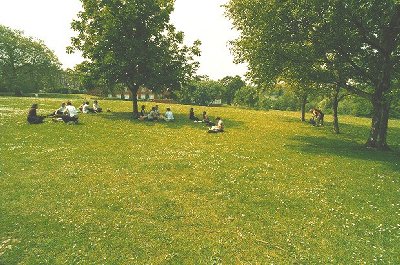
"...one cannot teach virtue as one can teach how to memorize a poem, but virtue consists in understanding the abstract rules that govern technique."
J-M Rabate (on Socrates), The Future of Theory, Blackwell 2002)
The starting point for the symposium was the observation that while relatively little has been published in recent years dealing explicitly with questions of disciplinary mastery in performance, arts practitioners are registering across the country for higher degrees in performing arts practice (in Music, Dance, Theatre and Performing Arts).
The symposium addressed questions and issues relating to expert/creative meta-practice and academic writing: that is, to research into/through disciplinary mastery (and the evaluation of performance) in the higher degree context. Indicatively:
• what is the knowledge-political status of disciplinary mastery in the university?
• how do we distinguish, in research-worthy terms, between "creative", "professional" and "research imperatives" in performing arts practice?
• what should be the relationship, in the higher degree context, between disciplinary mastery and the production of writing in the "critical-analytical" tradition?
• how should we approach the relationship between composition for performance, performance mastery and performance viewed as "interpretation"?
• do we need to be able to write differently when a major focus of research is creative practice?
Performing Arts in the School of Arts at Middlesex brings together researchers in Music, Dance and Theatre Arts.
The Symposium programme included Keynote Presentations, short papers and discussion groups at the Trent Park site of the University. Material presented may be published in the 2003 edition of e-pai
Professor Gabrielle Parker, Dean of the School of Arts, opening the symposium.
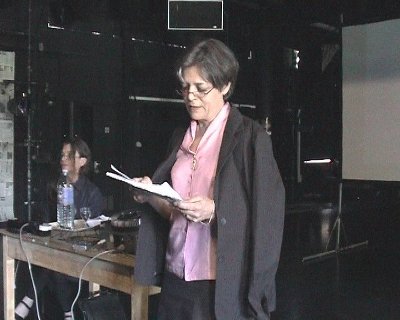
The presentations (abstracts)
See full texts at this link ...
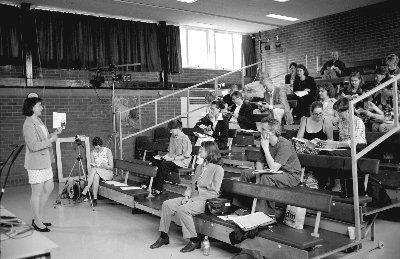
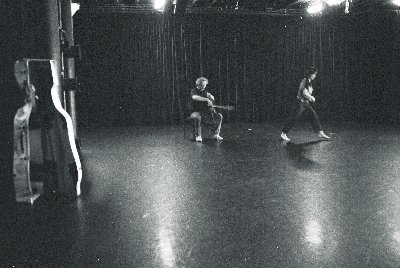
Susan Melrose
Who Knows - and Who Cares (about performance mastery)?
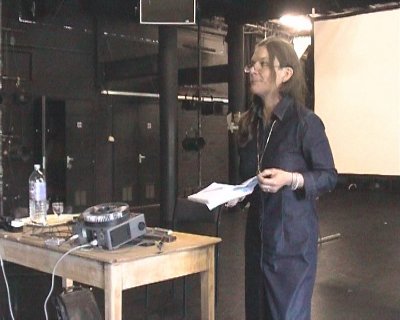
If we were to start from the premise that traditionally, most (published) research-active academics are professional or expert writers and educators, then (professional) arts practitioners entering the university higher degree programme might be better placed than they currently are to ask: "How do you do what you do - and according to what sorts of criteria?" Universities are conservative institutions, in the best as well as the worst senses of the term. It can be hard not only to institute change within them, but to admit to our own often internally contradictory value systems, to what regulates our own judgements of taste and value. According to a number of fin de siècle (late 20thC) writers and analysts, some of those values - particularly when it comes to the theoretical writers who have figured in academic training in cultural studies - were derived from a close relationship with and sympathy for the 20thC avant-garde. Now, sympathy for the avant-garde is a demanding mistress for those of us who also inhabit, and reproduce the (conservative and scriptural) values of, that major institution of cultural life that is the university.
Richard Gough
Dancing with Joules: The Transformation of Performance Knowledge
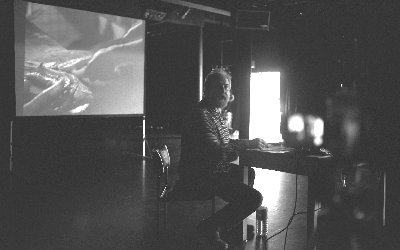
From extraordinary video footage of food preparation techniques on a street in Thailand to combat in the kitchen between Chinese Master Chefs, this audio and video presentation will explore virtuosity in performance by first raising issues to do with skill, competence and ability. Working through aspects of training, apprenticeship and mastery by considering a few of the great world traditions of theatre/dance; Beijing Opera (China), Kabuki (Japan) and Kathakali (India), the functions of form, stylistic conventions and continuity begin to emerge. Aspiration to and attainment of the virtuosic is questioned and problematised in the light of other approaches to notions of individual and collective creativity and questions of how composition, notation and performance scores can enable, nurture or prescribe virtuosity are advanced. The transformative power of the performers energy will be witnessed (on video) and the presentation will consider how performance knowledge is transmitted from a Bharata Natyam dance guru, through Meyerhold to Grotowski. Finally, speculation and provocation are made on current training practices, the reflective practitioner, performance knowledge and the passing and surpassing of skill.
Nick Till
For Your Own Good: Discipline and its Virtues
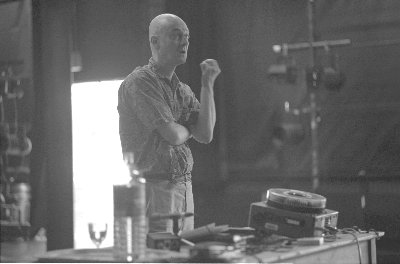
In this paper I consider the relationship between virtuosity and virtue, suggesting that it derives from the original meaning of the concept of "virtus" - a term that implies strength of character, will and application, attributes that are ably demonstrated in artistic virtuosity. The construction of the virtue of virtuosity is also charted in relation to changing valuations of labour from the 18th to the 20th century, which inflect the shifting fortunes of the virtue of virtuosity itself. The second part of the paper undertakes an analysis of Chopin's Scherzo in C# minor to demonstrate how in this piece Chopin stages a confrontation between different modes of pianistic virtuosity at the beginning of the 19th century.
Alessandra Lopez y Royo and Ni Made' Pujawati
Researching Lègong: somatising Balinese ideas of bodily discipline, mastery and virtuosity in a non-Balinese context
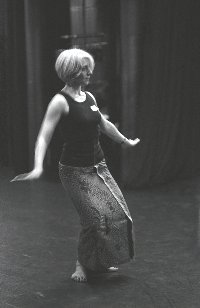 |
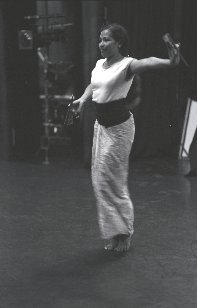 |
The presentation will focus on research-in-progress about Lègong dance and its multiple representations throughout its 20th century history and today. Outsiders have taken Lègong as an epitome of female grace and have used it to essentialise Balineseness: Lègong has thus become indexical of Bali. To the Balinese Lègong, a tari lepas or virtuoso dance, is the means by which the female dance body is disciplined, through what constitutes a process of becoming. Among the questions which sustain this research effort there are two which are relevant to the theme of the symposium: 1. How Lègong is taught and a particular somatisation of bodily discipline, encompassing ideas of femininity, is achieved through dance 2. How the dancer-researcher, and the dance-teacher understand dance and training, including processes of discipline and dialogue This will be instantiated by the process through which a highly experienced dancer, knowledgeable about Lègong and accustomed to training Balinese children and adults, copes with and explains the differences of working with a non-Balinese female adult in a non-Balinese setting. The presentation will unfold following a dialogic model, involving dancer-researcher, dance-teacher and audience.
Kim Brandstrup with dancer Jonathan Poole and in conversation with Susan Melrose and Renate Bräuninger
Sketches of Motion
Kim Brandstrup holds an AHRB post-doctoral creative and performing arts fellowship at Middlesex University, and is Artistic Director of Arc Dance Company.
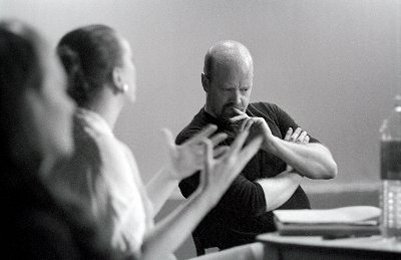
|
|
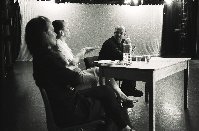
|
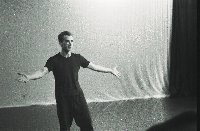 |
Mary Nunan and Ferenc Szucs
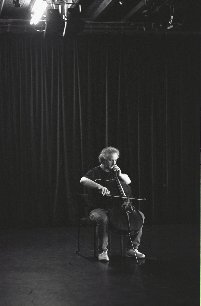 |
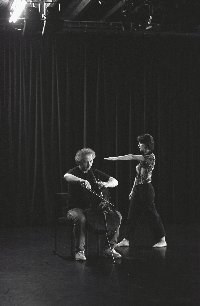 |
The presentation will begin with a performance of a work-in -progress. After the performance we will both speak about aspects of the work and the research, which began in January 2002. This research is on-going because the process continues to reveal questions that relate to our individual research interests. When we began the process we each brought to the collaboration insights from our own specific tradition, classical music performance and contemporary dance performance. The emergent material has been strongly influenced by these traditions. However as we continue the research process it is becoming increasingly about creating a work which is both grounded in these traditions but which also resonates with and expresses our sensibilities as creative artists. We will speak about some of the issues we encountered in the creative process to date and the decisions which have informed the content, composition and performance of the current work. Additionally, we will then speak about our research to date on our individual research areas. Minding the Body in the Choreographic Process. The Importance of Not Knowing what you are Doing and 'Reclaiming Virtuosity': The Musician as Creative Artist in Performance Practice.
Professor Robert Pascall
Sounding out the text: historical performance practice in research and concert-hall
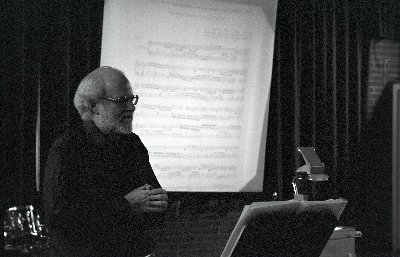
This presentation will offer some ideas on situating the musical text in the contexts of composing and performing. Notation is always of its time and place, and a rich reading of a musical text demands knowledge of its associated contemporary performance practices - the notes are not enough! Case studies from Frescobaldi (1583-1643) and Brahms (1833-1897) will demonstrate something of the kinds of knowledge that can be unearthed and applied. Since this knowledge is always generalised vis-a-vis a score, I will argue it becomes essentially liberating for performers today.
Signy Henderson
XXX, Virtuosity, and the Abjection of the Performer
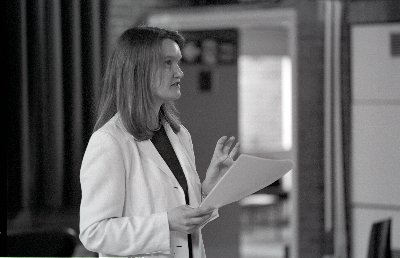
The paper discusses the relationship between production, performer, and audience in XXX by La Fura dels Baus (2003). It first considers the effect on the audience of extensive pre-publicity, and the influence of the expectations created through this publicity on virtuosity as a feature of the performances. It then goes on to consider how this production offered the audience an experience of abjection, with specific reference to Kristeva's development of that term, and asks who witnesses the abjection, who is abjected, and whether in this case virtuosity is denied to the performers as part of the process of rendering them abject.
Renate Bräuninger
Virtuosity in George Balanchine's Work
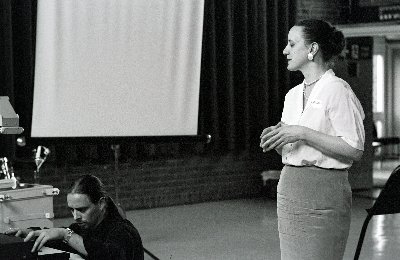
Balanchine created some of his most important works without the input of highly trained virtuoso dancers. Did this mean he was able to create something like a faked virtuosity in which he could set almost any dancer in the right light? If so, how did he manage to achieve this? He was interested, however, in working with highly trained virtuoso dancers and they were definitely a source of his inspiration. His works still represent great challenges for dancers, but they also seem to survive the dancer whose work is not suited to them. This leads one to ask: can there be something like virtuosity in the choreographic work itself? How has Balanchine's work been performed and how does it perform itself between those notions of virtuosity?
Ralf Nuhn
Naturalistic Inquiry as Audience Feedback
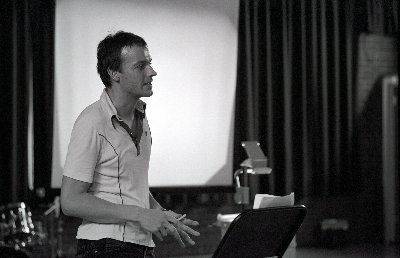
The starting point for this presentation is my artistic practice which revolves around interactive mixed reality environments which seek to establish and explore relationships between screen based virtual environments and the physical domain. Besides broader physico-philosophical considerations my work is motivated by issues regarding human computer interaction as well as social interaction within computer assisted ecologies. I am therefore very interested in how audiences receive and interact with my installations, and I am using naturalistic inquiry methods to evaluate this aspect of my work. I will argue that this research is not an abstract academic exercise but instead has become part of my artistic programme and informs my practice.
Raenelda Mackie
Individuality and Regional Characteristics in Spanish Performing Practice from 1860
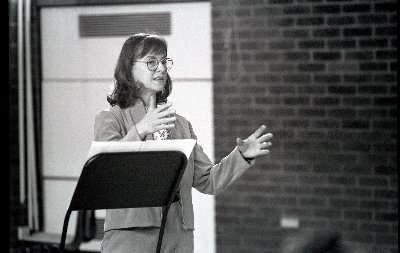
The most illuminating clues we have to the individuality of performance style in Spanish piano music, lie in the piano-roll recordings of Granados himself and the later recordings on Ensayo of Federico Mompou, playing his own compositions. The notation of the Spanish Dance no 5 by Granados implies a regularity of rhythm, characteristic of the cante jondo which, with its insistent rhythmic idioms, may easily degenerate into a tiresome stylization. Musicians accustomed to dependency on the notated score for achieving the musical work do not immediately understand Granados' rhythmic buoyancy in his performance style. The same principle applies to the interpretation of Federico Mompou, who, while being the natural Catalan successor to Granados, notably in the development of melody and modulation, reveals in his recording a departure from notation in his search for simplicity and synthesis; maximum expression with the minimum of means being his expressed aim.
Ildi Solti
The Mirror-fallacy: mimesis, realism and a new concept of virtuosity in the theatre
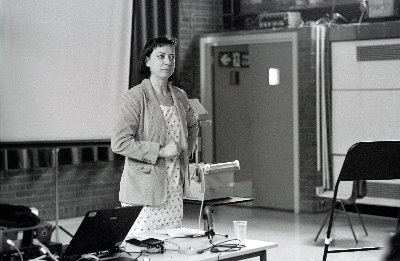
In today's theatre, more often than not virtuosity is conceived in terms of 'truthfulness' of story and character, almost invariably meant as a consistent narrative and realistic personality. Quite anachronistically, these views of (predominantly) 20th century realism tend to be authorised by appealing to Shakespeare and particular to his views on acting and theatre, supposedly voiced directly by Hamlet in the 'advice to the players', exhorting theatre makers to 'hold a mirror up to nature'. Oddly enough, as I would like to argue, the play itself appears to puncture the view that theatre is a consistent reflection of the world at every turn, especially when they are put to use by Hamlet in the 'Mousetrap scene', 'to catch the conscience of the King'. In the presentation, I will reconsider the mechanism of this scene as a performance instrument, and will question the traditional separation of performance Text and Space in the process of performance and therefore, also in analysis. I argue that the goal of the designed interference of the mechanisms of Text and Space is to produce a new, dynamic phenomenon, which is enabled by, but is inexplicable only in terms of, these two constituents. In reconceptualising the performance process, I will enlist some help from an unlikely quarter, using 'intelligent learning' in a study about mathematics in the primary school.
John Dack
Virtuosity and the Virtual
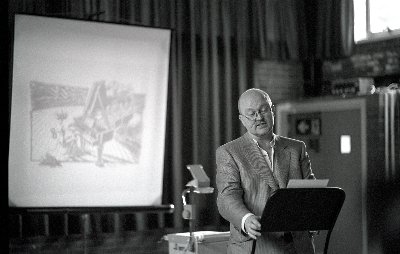
Pierre Schaeffer (1910-1995) the "founder" of musique concrète referred to "virtuosity of the ear rather than the hand". Musicians often have an ambivalent relationship with instruments. Nevertheless, they are the necessary means by which the abstract and concrete elements of musical languages are communicated. Real musicians, interacting with real instruments in real-time: these "prerequisites" have been called into question by the recording process and analogue/digital technology. I will discuss how acousmatic (or tape) music only appears to disregard the physical nature of source and player. In reality, it encourages a critique of the "instrument", "performance" and "virtuosity".
Kit Poulson
An obsidian mirror - A true and faithful account of what passed between,for many years ...
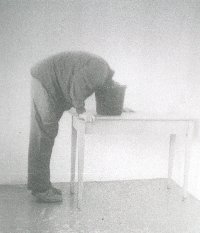 |
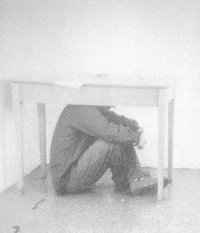 |
|
'We must be wary of art, it is often mere virtuosity' Eric Satie. My presentation will be an introduction of my work as a painter and live artist alongside a description of the Elizabethan philosopher Dr Dee's attempts to establish a pattern in the wide knowledge he accumulated, through the examination of a stone mirror. I will look at my position as a producer of objects and how this has led me to an interrogation of my practice and the undertaking of a research degree. |
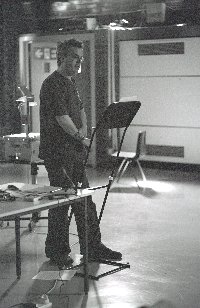 |
Jayne Richards
Beyond the Archimedean Point (3.9 microlectures on performance process (with apologies to Matthew Goulish)
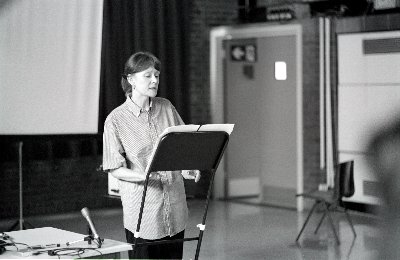
Can we note an historically persistent proclivity to "theorise" performance from the singular viewing point of the spectator-critic in terms of what can be defined, concretised or identified by its shared features and generalities? Can we argue that the processual nature of contemporary performance operates within logics that exceed the largely spatial and substantialist frames of discursive practices inherited principally from the perceptual mechanisms of an outdated but persistent metaphysics? If so, how do we (and why do we) write about performance?
Kate Flatt with Bernadette Iglich
The Space Between
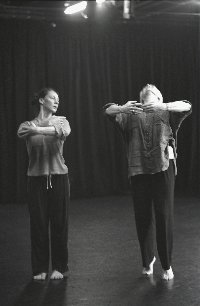 |
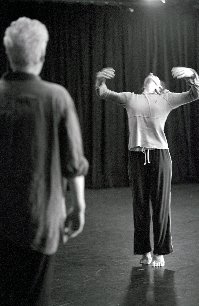 |
An attempt to reveal the experienced dancer's skill at interpreting the Choreographer's suggestions, half-formed ideas, instructions and requests. The relationship between dancer and choreographer takes many forms. In the generation of new solo dance material two imaginations are at work in arriving at a result which often reflects the choices of both. Working from imagery the presentation attempts to reveal the experienced dancers skill at interpreting the choreographers suggestions, half formed ideas, instructions or requests and providing what may be missing.
Jackie Smart with Marianne Sharp
Between eloquence and articulacy
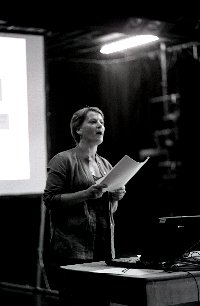 |
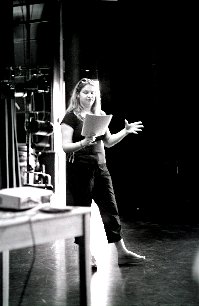 |
|
The presentation explores the verbal structures and patterns of two interviews with practitioners (Tim Etchells and Wayne McGregor) in terms of what these reveal about the relationships between practice and speech, and between speech and writing. It proposes that the time-space inhabited by the interviewer/interviewee is multiple and has a chaotic structure, akin to that of the creative working process; it goes on to ask what is lost and what is gained in the process of translating that into a coherent written articulation of ideas. |
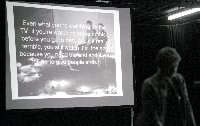 |
Peter Fribbins
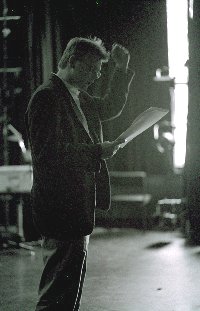 |
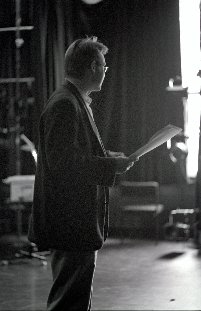 |
In music, the term virtuosity has many connotations and associations, most obviously in the context of performance, and especially in nineteenth century music. But can it ever have a meaning when applied to the production of music independent of its execution? Can there be a sense in which a composition may be viewed as virtuosic?
Mike Bridger
Virtual Virtuosity...
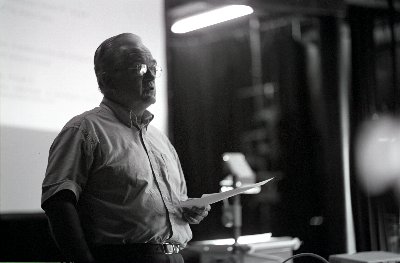
One of the qualities admired in virtuosic performance in any art is something akin to "superhuman-ness", whether manifested in strength, velocity, dexterity or some other characteristic depending on the art form or genre involved. Inevitably, such qualities can easily shade into the "machine-like", and in this short presentation some examples of this in music and electronic music are considered in the context of speculation about an aesthetics of the artificial. There is, of course, a fundamental paradox here, since human expressivity and mechanically created sound or images are likely not to be in a state of natural harmony. However, works of art are themselves artefacts, which prompts consideration of the notion of what might be termed "cyberaesthetics".
Tammy McLorg (choreographer) and Mavin Khoo (transcultural dance practitioner) in dialogue
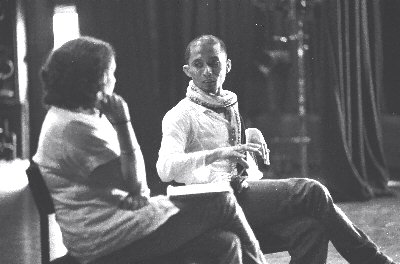 |
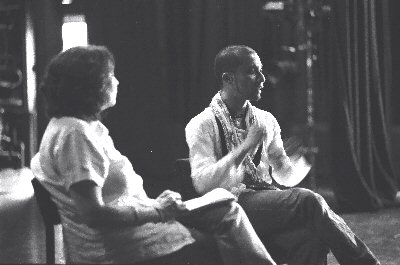 |
"I'm going to be speaking with Mavin Khoo and asking him a little bit about his work. I really respect Mavin's work and I find what he is trying to do, and where the work is going choreographically very exciting. Mavin was described in The Guardian by Judith Mackrell as 'half god, half tart'. I think we'll come to that a bit later - it's a very interesting description, because Mavin comes from two very different cultures. His upbringing and his training and the work he has been doing, involve two very different [dance performance] styles - Baratha Natyam and classical ballet - that on the surface are difficult to put together."
Photographs copyright © 2003 John Robinson.
Video frames by Hannah Bruce.
Page last updated 14th January 2020.